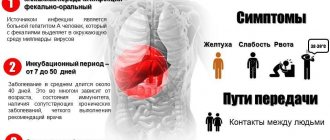This branch of clinical surgery has been operating very successfully for over 80 years, which has helped save many lives and relieve a large number of patients from varying degrees of disability.
In modern medicine, there are more than a thousand pathologies of the nervous system, in particular the brain and spinal cord, which can be completely or partially cured using innovative surgical methods (microsurgery) with minimal damage to healthy tissue.
We are talking about the stereotactic method and the use of a gamma knife, using which specialists are able to reach the deepest areas of the pathological process in the brain, perform complex operations without the use of general anesthesia with the least impact on the body
, without negative consequences and risks.
Typically, a neurosurgeon deals with certain problems in a narrower direction, that is, he specializes only in any pathology of this kind:
- oncology;
- traumatic consequences;
- a pediatric neurosurgeon deals with congenital anomalies and pathologies of early childhood;
- cerebrovascular diseases;
- surgical methods for treating peripheral parts of the nervous system;
- psychiatric direction.
The scope of activity of a neurosurgeon includes the treatment of pathologies of the nervous system using highly qualified surgical intervention.
What does a neurosurgeon do?
The competence of a neurosurgeon includes the diagnosis and treatment of diseases of the nervous system. The doctor performs surgical interventions on the brain (spinal and brain), on the spinal column and on other organs that have disorders associated with the innervation process.
The modern neurology system is structured in such a way that patients most often come to the neurosurgeon for whom a diagnosis has already been made. Therefore, the doctor additionally studies the opinions of other specialists. This doctor works closely with neurologists and neurologists.
In addition, the responsibilities of a neurosurgeon include caring for the patient after surgery, when he observes the patient and monitors his condition. He prescribes effective rehabilitation measures that allow patients to recover faster after intervention. As necessary, the neurosurgeon prescribes subsequent therapeutic treatment and draws up schedules for further management of the patient.
Estimated cost of neurosurgical operations
Most of the world's clinics performing neurosurgical operations have online forms for consultations on various issues. The table shows the estimated price of neurosurgical treatment.
| Type of neurosurgical intervention | Pricing policy (prices are indicated in Eurocurrency) |
| Oncological neurosurgery | From 12,000 to 25,000 |
| Treatment of vascular pathologies of the brain | From 20 000 |
| Spinal neurosurgery | From 15,000 to 20,000 |
Read also…. Effective treatment of osteochondrosis at home
What diseases does a neurosurgeon treat?
Often, the patient’s life depends on the quality of the operation performed by a neurosurgeon. This is especially true in cases of emergency surgery.
The doctor most often encounters the following diseases in his work:
- Anomalies of the development of the nervous system;
- Tumors of the brain and spinal cord, as well as peripheral nerve trunks;
- Hematomas, abscesses and empyema of the brain;
- Tunnel syndrome (pinched nerve located on the periphery in a narrow musculoskeletal space);
- Hemorrhagic stroke;
- Ocular melanomas;
- Osteocondritis of the spine;
- Intracranial hemorrhages;
- Ischemic stroke;
- Spinal hematomas;
- Injuries to the brain, spinal cord and peripheral nerves;
- Herniated intervertebral discs, accompanied by compression of the spinal cord root and a pronounced decrease in muscle innervation;
- Epilepsy, accompanied by frequent epileptic seizures;
- Parkinson's disease progresses at a high rate and the ineffectiveness of the therapy;
- Acromegaly;
- Plexopathies;
- Abscesses of the neck, head and brain;
- Trinitarian neuralgia;
- Exophthalmos;
- Hypopitcytarism, etc.
Areas of neurosurgery
It is worth noting that all neurosurgery is divided into several large areas:
- Oncological neurosurgery of the brain.
- Spinal neurosurgery.
- Vascular neurosurgery.
- Pediatric neurosurgery.
Oncological neurosurgery – shows excellent results in the treatment of tumors and brain cancer . The brain contains the most important vital centers that are responsible for breathing and heartbeat. In order to perform brain operations with minimal risk and high efficiency, neurosurgeons use innovative, first-class equipment.
Spinal neurosurgery deals with the treatment and restoration of the nerve endings of the spinal cord after various diseases and injuries. A peculiarity of spinal cord operations is the fact that they can be effective only within two months after receiving the injury. Neurosurgeons even operate on nerve ganglia and plexuses. This allows many patients to recover even after limb paralysis.
Read also…. The most effective treatment for osteochondrosis of the lumbar spine
Vascular neurosurgery is performed for underdeveloped blood vessels and cerebral aneurysms. These are the most complex operations that are performed only by exceptional professionals. Vascular neurosurgery can also be performed for congenital anomalies of cerebral vessels. Neurosurgeons can use either microsurgical intervention or gentle techniques for targeted removal of the affected area.
Pediatric neurosurgery is not recognized as a separate branch in all countries. This practice is common in Germany. There, only professors and very qualified neurosurgeons perform neurosurgery operations on children. They also treat cancerous brain tumors, birth injuries, and vascular aneurysms.
When is a consultation with a neurosurgeon necessary?
In order not to complicate the work of the neurosurgeon and not to create serious threats to your own health and life, you should not delay consulting with this specialist. The fact is that treatment in advanced cases is much more difficult than when pathology is detected at an early stage of its development. Therefore, it is so important to know the symptoms that indicate that a consultation with a neurosurgeon is required.
Among them:
- The patient has been diagnosed with an intervertebral hernia or has symptoms of it.
- The numbness of the fingers of the upper limb or the entire hand is bothersome. In this case, numbness is accompanied by surges in blood pressure and dizziness.
- Numbness of the fingers on the lower extremities bothers me. This feeling is accompanied by painful sensations in the lumbar region. The pain is present on a constant basis and can radiate not only to the fingers, but also to the entire limb, radiating to the lower leg and thigh.
- The occurrence of pain in the chest or in its area.
- Received traumatic brain injury, which is accompanied by a feeling of nausea or vomiting, loss of consciousness, tinnitus and dizziness. It is difficult for a person to perceive information, and his coordination of movements is impaired. In this case, hospitalization should be immediate.
- Congenital abnormalities of the development of the brain or cranium, as well as pathologies in the functioning of the nervous system.
- Any symptoms indicating disturbances in the functioning of the central nervous system, especially those that occur suddenly. These may be disturbances in speech, vision, headaches, loss of consciousness, etc. (
Where can I study to become a neurosurgeon?
It is possible to obtain the necessary education at a medical school. To do this, you must first enroll in the “General Medicine” direction, where you will have to study for six years if you are studying full-time. And after receiving a diploma, the young physician must enter residency, choosing the direction of “Neurosurgery.” The duration of training will be another two years.
True, the novice specialist will work as an assistant for several years and only over time will they be able to trust him with some simple operations. Such experience is gained through years of practice.
In addition, neurosurgeons are actively involved in scientific activities. Many of them became famous for introducing innovative techniques and methods of treatment. And for this, the doctor needs to monitor all medical scientific and practical activities, as well as published articles and monographs. In other words, a neurosurgeon is in a state of constant learning and searching for new professional information.
How does a consultation with a neurosurgeon proceed?
The doctor's appointment begins with a survey of the patient's complaints. After which he studies the documentation he has: medical history, examination results, recommendations and opinions from other specialists. The doctor can ask clarifying questions that will allow him to make his diagnosis or confirm an existing one.
The next stage of admission is a targeted examination of the patient. He identifies the severity of the disease and performs a complete neurosurgical examination. The doctor examines areas of the body through which he will subsequently have to access the pathological area if surgical intervention is necessary.
Most often, before deciding on the need for surgery (if it is not an emergency), the doctor prescribes additional examinations and tests.
Neurosurgeon salary. Review of salary statistics for the Neurosurgeon profession in Russia
Average salary level for the last 12 months: Neurosurgeon in Russia
Distribution of Neurosurgeon vacancies by regions of Russia
As can be seen in the diagram, in Russia the largest number of vacancies for the Neurosurgeon profession are open in the Samara region. In second place is the Moscow region, and in third place is the Primorsky Territory.
Rating of Russian regions by salary level for the profession Neurosurgeon
According to statistics from our website, the profession of Neurosurgeon is the highest paid in the Yaroslavl region. The average salary is 150,000 rubles. Next come the Republic of Mordovia and the Nizhny Novgorod region.
Number of vacancies for the Neurosurgeon profession in % by salary range in Russia
As of 03/05/20, 381 vacancies are open for the Neurosurgeon profession in Russia. For 44.1% of open vacancies, employers indicated a salary in the amount of 30,200 - 60,200 rubles. 40.4% of ads with a salary of 200 - 30,200 rubles, and 7.6% with a salary of 60,200 - 90,200 rubles
Rating of similar vacancies by salary level in Russia
Among similar professions in Russia, angiosurgeon is considered the highest paid. According to our website, the average salary is 150,000 rubles. In second place is the Manager for Registration of Medicines with a salary of 115,274 rubles, and in third place is a Venereologist with a salary of 100,000 rubles.
Similar vacancies
50,000 rub.
GBUZ Children's Regional Clinical Hospital, Moscow Region, Klin
from 55,000 rub.
Municipal Autonomous Institution "Central City Clinical Hospital No. 23", Yekaterinburg, Old Bolsheviks Street
from 35000 RUR
GBUZ Regional Clinical Hospital of the Kaliningrad Region, Kaliningrad, Klinicheskaya Street
from 70,000 to 80,000 RUR
GBUZ of the Komi Republic Ezhvinsky City Hospital, Syktyvkar, Mira street, k
45,000 rub.
GBUZ MO Moscow Regional Center for Maternal and Child Health, Moscow region, Lyubertsy
24000 RUR
State Budgetary Healthcare Institution of the Arkhangelsk Region “First City Clinical Hospital named after. HER. Volosevich", Arkhangelsk
44,000 rub.
Examinations prescribed by a neurosurgeon
Before proceeding with surgery, the doctor will need to collect the following information about the patient:
- Information about blood type and Rh factor;
- HOW;
- Coaulogram;
- X-ray images;
- CT or MRI data;
- Doppler ultrasonic data;
- Myelography data;
- Puncture of an abscess or cystic formation;
- Brain tumor biopsy or vertebral biopsy.
Of course, the patient will not have to undergo all these studies. During the appointment, the doctor will clarify which tests should be prepared for the subsequent consultation.
When all the results are collected, the person will again visit the neurosurgeon. It is at this appointment that he decides on the need for surgical intervention, determines the scope of the operation, and sets a date for it. If it is possible to manage with conservative methods of treatment, then the doctor sends the patient to undergo further therapy from the specialist who treated him previously.
What diagnostic methods does modern neurosurgery use?
Let us note once again that spinal neurosurgery includes not only a surgical operation, but also deals with the development of the optimal treatment option. For this purpose, modern survey techniques are used.
In order to carry out a precise operation on nerve endings, neurosurgeons use the following diagnostic methods:
| Research methods in neurosurgery |
| Myelography. MRI. ST. CT. Lumbar puncture. Positron emission tomography. Cerebral angiography. Echoencephalography. Electromyography. Ultrasound Doppler scanning. Electroencephalography. |
Nervous system and needs of neurosurgery
The nervous system is a large number of conductors and analysis centers that work as a whole. Therefore, to correctly restore their integrity, an accurate and low-traumatic comparison is necessary, which is only possible using microscopy. A contrast study allows one to clearly visualize structural and functional changes in the vascular wall of the brain and spinal cord, which is inaccessible to conventional X-rays and ultrasound. It is these new studies that allow a specialist to timely identify and correctly treat aneurysms, thrombosis and congenital brain defects.
The emergence and gradual development of neurosurgery
Neurosurgery emerged as a separate field from neurology in the 20s of the twentieth century, which was dictated by the complexity of treating polytrauma and the conduct of wars. At its inception, science dealt with a rather limited range of diseases; in addition, diagnostics and surgical treatment methods were very modest. However, at the end of the last century there was a sharp breakthrough in the development of the industry, which was facilitated by the widespread use of microscopic optics and contrasting minimally invasive examination methods. Currently, neurosurgery is a specialty that has good prospects and is constantly developing.
Cost of treatment
The exact cost of operations is determined by a number of factors: the specific disease, the patient’s condition, concomitant pathologies and a number of others. To clarify the cost, it is necessary to consult a doctor and a number of diagnostic measures
| Name of service: | Cost, rub. |
| Primary appointment with a surgeon | 2500 rub. |
| Repeated appointment with the surgeon | 2500 rub. |
| Appointment with a surgeon, Ph.D. primary | 3500 rub. |
| Appointment with a surgeon, Ph.D. repeated | 3500 rub. |
| Appointment with a surgeon, MD. primary | 4500 rub. |
| Appointment with a surgeon, MD. repeated | 4500 rub. |
What is the difference between a neurologist and a neurologist? Neurologist or neuropathologist?
The name of the science “Neurology” comes from the Greek words meaning “nerve” and “teaching”, and the science “Neuropathy” comes from the words meaning “nerve” and “disease”.
The name of the science “Neurology” comes from the Greek words meaning “nerve” and “teaching”, and the science “Neuropathy” comes from the words meaning “nerve” and “disease”. In Soviet times, specialists in neuropathology treated patients with neurological diseases, but now doctors in this practice are usually called neurologists.
Difference between neurology and neuropathology
Neuropathologists now, as a rule, only refer to those who study neurological diseases, develop methods for their diagnosis, prevention, treatment, and so on. In lecture courses on neuroscience and neuropsychology, the word “neuropathology” may often be heard, but in hospitals and clinics you usually hear only the word “neurology”. In the foreign approach to these sciences, a neuropathologist is a specialist in the pathomorphology of the nervous system, and a neurologist is a doctor who treats diseases of the nervous system. Authors of educational literature, as a rule, treat these terms the same way.
Why are neurologists still called neurologists?
Especially for adults who are accustomed to outdated Soviet names of medical practices, very often in articles and colloquial speech they use the word “neurologist” instead of “neurologist”. Thus, although there have long been no signs in doctors’ offices with the words “appointment with a neurologist,” and all doctors specializing in neurological diseases are now officially neurologists, booklets for the elderly may still say “appointment with a neurologist.”
Other specializations
Modern neurologists sometimes call themselves differently if they specialize in narrow theoretical profiles, for example, the structure of the nervous system (specialist in neuroanatomy), or the mechanisms of the nervous system (neurophysiologist), or the biochemistry of the nervous system (specialist in neurochemistry), or the connection between mental functions and the brain (neuropsychologist), etc.
When to contact a neurologist?
Symptoms for which people turn to neurologists (or previously turned to neurologists):
- lack of coordination
- muscle weakness,
- loss or change in sensation,
- dizziness,
- headache,
- convulsions,
- insomnia,
- pain in any part of the body.
Various symptoms of psychological problems (depression, hallucinations, mood swings, constant fatigue, irritability) may also indicate neurological diseases.
Training of a neurosurgery specialist
After completing six years of study at a medical university, a student who has expressed a desire to become a neurosurgeon must undergo an internship, which lasts 2-3 years, or a residency (in Western Europe and America) for 6 years. This duration of training is due to the complexity of both the discipline itself and the difficult methods of treating diseases of the brain and spinal cord. During specialization, a physician must master methods of correct diagnosis and be able to determine treatment tactics, which is especially urgently needed in neurosurgery. Doctors must also have excellent practical skills. This is achieved by personally conducting operations during the training process.
What is it - spinal hemangioma, methods of its treatment
What is a spinal hemangioma? This is a benign vascular tumor that is not capable of degenerating into a malignant neoplasm. This pathology occurs asymptomatically for quite a long time and is detected by chance when a person goes to the doctor complaining of a headache. After radiography or MRI, the diagnosis is confirmed and the question arises about the advisability of surgical treatment. So what is this disease and how to treat it? Let's try to figure this out.
- What is a spinal hemangioma?
- Causes
- Symptoms of the disease
- Treatment of the disease Surgical treatment
- Puncture vertebroplasty
- Embolization
- Alcoholization
- Radiation therapy
What is a spinal hemangioma?
Hemangioma is a vascular tumor in the form of a tangle of intertwining vessels of different types. Damage to the vertebral bodies often occurs, but there is a high probability of tumor growth in the cartilaginous layers. Initially, defective vessels form a tumor inside the vertebra. Due to injury or heavy stress, hemorrhages and thrombosis occur; the spilled blood helps to “cleanse” the damaged area with osteoclast cells, after which the vacant space is filled with new defective tumor vessels. This process occurs continuously, causing the growth of the tumor. Spinal hemangioma rarely grows more than 1 cm.
Causes
Such a vascular tumor can occur for the following reasons:
- due to hereditary predisposition;
- as a result of vertebral trauma.
Scientists have found that if close relatives have been diagnosed with spinal hemangioma, the risk of developing this disease in their descendants increases fivefold. This is probably due to the fact that the walls of the vessels have hereditary failure.
Since the pathology occurs much more often in women than in men, it can be argued that estrogens play an important role in the formation of tumors. In addition, during pregnancy, active growth of hemangioma occurs not only due to changes in hormonal levels, but also as a result of the increasing load on the spine.
Injuries and excessive stress increase the growth of the vascular component and promote the formation of tumors.
Symptoms of the disease
Symptoms of the tumor manifest themselves in different ways and depend on the part of the spine in which the hemangioma forms, as well as on its size. It may not show itself for a long time and not cause any trouble. This neoplasm is discovered completely by accident during an examination associated with an injury or other ailment of the spine.
The people were taken aback! Joints will recover in 3 days! Attach...
Few people know, but this is exactly what heals joints in 7 days!
The very first sign of spinal hemangioma is pain, which at first is mild and occurs periodically. As the tumor grows, the pain begins to intensify, after a while becoming unbearable. If the hemangioma grows more than one centimeter, then, in addition to pain, neurological disorders also begin to progress.
If the tumor is small, then the pain is not too severe and bothers the person most often at night or after physical activity. When structures of the spinal cord are involved, paralysis, paresis and numbness, as well as dysfunction of the pelvic organs, are possible.
If the hemangioma affects the thoracic spine, then the symptoms in this case are as follows:
- pain in the area of the affected vertebra;
- paralysis and paresis;
- feeling of numbness in the limbs;
- dysfunction of the digestive system, heart rhythm, disorder of the pelvic organs.
If the cervical spine is affected, then there is a high probability of impaired blood flow in the brain, which causes insomnia, headaches, dizziness, reduced mental performance, impaired vision and hearing.
With lumbar hemangioma, the following symptoms are possible:
- numbness in the limbs;
- pelvic organ disorder;
- pain in the groin, lower back, hips;
- paresis and paralysis of the lower extremities.
Aggressive hemangioma of the spine can cause such serious complications as compression of the spinal cord and its roots and compression fractures of the vertebral bodies, which are manifested by paresis, paralysis and dysfunction of internal organs. If such symptoms appear, you should consult a doctor as soon as possible.
It is important to detect this disease in a timely manner before complications arise and irreversible processes in the spinal cord occur. A patient with back pain should be examined by a neurologist, vertebrologist, and neurosurgeon.
Treatment of the disease
Treatment of spinal hemangioma involves several treatment options. This depends on the size of the tumor, the severity and severity of its development. It is important to regularly monitor it with specialists. Popular methods of treating this disease will be discussed below.
Surgical treatment
If a tumor in the spine causes unbearable pain, leads to problems with defecation and urination, loss of motor activity and other pathological conditions, then the doctor decides on surgical intervention to remove the hemangioma.
In addition, it is necessary for pronounced neurological disorders or a tendency for clinical manifestations of the disease to increase. In general, surgical treatment is indicated when a large tumor begins to compress the spinal cord. However, such an operation is dangerous because severe bleeding may occur, as well as due to the high risk of cancer recurrence.
Puncture vertebroplasty
The use of puncture vertebroplasty is considered a real breakthrough in the treatment of spinal hemangioma. The essence of this method is that a special cementing substance mixed with barium sulfate and titanium is injected into the vertebra. This not only reduces the tumor, but also prevents its growth, and the vertebral body is compacted with bone cement. This technique is especially effective in cases of aggressive disease.
Embolization
This treatment involves the introduction of a special solution, which leads to embolism of the tumor vessels and disrupts its nutrition. The active substance is injected both into the hemangioma itself and into the vessels located nearby. The disadvantage of this treatment is that relapse occurs due to the preservation of small vessels that feed the tumor, and the structure of the vertebra is also disrupted. There are situations where embolization is technically very difficult and sometimes impossible to perform. A complication of this method is considered to be an acute circulatory disorder that occurs in the spinal cord.
Alcoholization
This method of treatment involves injecting a solution of ethyl alcohol into the tumor, leading to its reduction due to vascular sclerosis. But this technique also has dangerous complications: the bone tissue of the vertebra is depleted and destabilized, resulting in a pathological fracture several months after the procedure. Because of this, this treatment method is not widely used.
Radiation therapy
This method of treatment is classic and is considered much safer than open surgery. Although irradiation is quite effective, due to complications such as radiculitis, myelopathy, skin reactions, and damage to nerve fibers, radiation therapy has not found its widespread use. In addition, a large dose of radiation is required to destroy the tumor. This method of treatment is contraindicated for children and pregnant women.
Another problem after such therapy is considered to be a violation of the integrity of the vertebra after the tumor decreases in size, as this contributes to its pathological fracture. Currently, this treatment method is usually prescribed to elderly patients with high surgical risk.
Spinal hemangioma: contraindications
After the patient has received appropriate therapy, he will undergo postoperative recovery and further rehabilitation, during which the following actions are contraindicated:
- manual therapy;
- massage;
- treatment with folk remedies;
- exercise stress;
- gymnastic training.
Thus, we have figured out what a spinal hemangioma is. When the first symptoms of this disease appear, it is necessary to consult a specialist as soon as possible, since the tumor can grow, causing dangerous complications. Timely treatment allows a person to lead a full life in the future.












